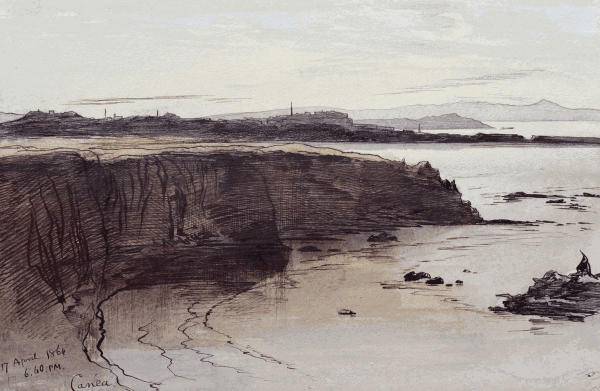After his death Edward Lear's reputation rested for many years on his extraordinary poetry, with its magical creatures from the Dong with a luminous nose, the Pobble who lost his toes, the inhabitants of the beautiful pea-green boat and his brilliant limericks, which earned his place in Poet's Corner in Westminster Abbey. We now recognise his artistic achievement too.
Lear made a distinction between his more finished studio work and his travel watercolours, rich in inscriptions, some with nonsense writing, which he used extensively for reference for both oils and more finished watercolours, which form the basis of this exhibition. The show will include loans from private collections including some rediscovered views of Greece and around 30 works will be for sale.
Lear's travel watercolours are invariably topographically accurate, but it is the poetry in his work which transcends representation which makes his work so appealing, and his phrase 'poetical topography' aptly describes his watercolours. There is a noticeable confidence to his working drawings.
Greece had been a boyhood fascination of Lear's as he greatly admired Lord Byron from an early age, and the beautiful drawings of Mount Athos and Argostoli reflect his affection for the country. He wrote to his friend Chichester Fortescue before he first set out for Greece that, 'I cannot but think that Greece has been most imperfectly illustrated… the vast yet beautifully simple sweeping lines of the hills have hardly been represented I fancy - nor the primitive dry foregrounds of Elgin marble peasants &c. What do you think of a huge work (if I can do all Greece)? Lear travelled all over Greece from 1848 - 1864 but he never made a comprehensive record of the entire country.
For further information please contact Karen Taylor:
+44 (0) 7881 581 275









